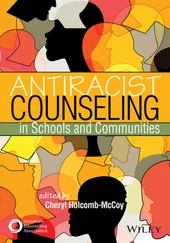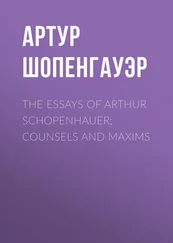Counseling and Psychotherapy
Здесь есть возможность читать онлайн «Counseling and Psychotherapy» — ознакомительный отрывок электронной книги совершенно бесплатно, а после прочтения отрывка купить полную версию. В некоторых случаях можно слушать аудио, скачать через торрент в формате fb2 и присутствует краткое содержание. Жанр: unrecognised, на английском языке. Описание произведения, (предисловие) а так же отзывы посетителей доступны на портале библиотеки ЛибКат.
- Название:Counseling and Psychotherapy
- Автор:
- Жанр:
- Год:неизвестен
- ISBN:нет данных
- Рейтинг книги:4 / 5. Голосов: 1
-
Избранное:Добавить в избранное
- Отзывы:
-
Ваша оценка:
- 80
- 1
- 2
- 3
- 4
- 5
Counseling and Psychotherapy: краткое содержание, описание и аннотация
Предлагаем к чтению аннотацию, описание, краткое содержание или предисловие (зависит от того, что написал сам автор книги «Counseling and Psychotherapy»). Если вы не нашли необходимую информацию о книге — напишите в комментариях, мы постараемся отыскать её.
Counseling and Psychotherapy — читать онлайн ознакомительный отрывок
Ниже представлен текст книги, разбитый по страницам. Система сохранения места последней прочитанной страницы, позволяет с удобством читать онлайн бесплатно книгу «Counseling and Psychotherapy», без необходимости каждый раз заново искать на чём Вы остановились. Поставьте закладку, и сможете в любой момент перейти на страницу, на которой закончили чтение.
Интервал:
Закладка:
The Process of Change
The quality of a growth-fostering therapeutic relationship is the agent of change, according to RCT. The process involves counselor authenticity, as well as the encouragement and support of the client’s vulnerability. It requires counselors to also allow themselves to be vulnerable, first by being open to being moved by the client and the client’s story, and second by being aware of the power inherent in the relationship and using that power appropriately. Counselors create a space in which clients can grow in their authenticity and rework their disconnections. Counselors respect their clients’ histories by honoring the pace of their movement and their disconnecting strategies, and they respect their clients’ readiness to reenter connection. Counselors also honor the clients’ readiness to bring their authenticity into the relationship.
Therapeutic change involves counselors connecting with the clients’ pain and circumstances in ways that allow themselves to be affected by the client (i.e., through mutual empathy). Together, counselor and client explore the relational and controlling images that affect them, rework disconnections, and navigate the power systems that influence their worlds and lives. The process is not seamless, and the counselor stays attuned to the clients’ verbal and nonverbal responses (see Sidebar 2.6).
Techniques and Interventions
RCT counselors do not use the language of techniques and interventions; rather, they strive to breathe life into the basic RCT constructs through their application. First, they consider the context of the situation in conceptualizing and assessing the situation. Then they consider the relational and controlling images that clients carry. Counselors and clients collaboratively identify the disconnections that clients experience. Looking at the broader cultural context as an impactful factor in clients’ experiences can help them gain compassion for themselves and find new, more growth-fostering ways to relate to their circumstances. Creating a context of authenticity is part of the process of change. In this case, a counselor would bring their own authenticity to the space and encourage the authenticity of the client or, in the case of family work, the authenticity of each family member. This would mean that counselors and clients authentically discuss their feelings of discomfort, fear, and the unknown.
Sidebar 2.6 Authenticity Exercise
RCT requires counselors to be both authentic and vulnerable. Self-reflection activities, like this authenticity exercise, are a great way to help better understand your authentic self. Take time to find a quiet place and journal about the following: When was the last time that you felt unable to be your authentic self? What factors influenced your ability to be authentic? Pay attention to any feelings of discomfort in your body as you reflect. Do you feel connected to others when they understand what you are going through?
Recognizing that growth occurs in relationship, RCT counselors focus on creating a therapeutic space in which clients can safely share their experiences and explore their disconnections, including any acute or traumatic disconnections in their lives. It is here that a counselor would honor the strategies of disconnection until safety is restored. Because counseling is a place where clients may share their more vulnerable feelings and experiences, they may also feel increased danger in this setting. For this reason, it is important to recognize that in the midst of building connection, some clients will also experience a need to pull back when they begin to feel comfortable or close. For many clients, wounding occurred in spaces they once deemed safe and at the hands of people they trusted or were supposed to trust. For this reason, working through disconnections and navigating the ebb and flow of therapeutic connection can take time.
Clients come to counseling needing the empathy of their counselors. Despite a counselor’s good intentions and best efforts, therapeutic relationships can experience empathic failures. Reconnecting following these experiences is part of the work of counseling. When empathic failures occur, RCT counselors sincerely express their desire to understand the client and explore the disconnection between them. The counselor follows the client’s lead and supports the timing of the client to enter into this discussion. Other times, counselors may simply see the client withdrawing and stay with the client in whatever context works for the client. Counselors do not challenge, prod, or seek connection during these times of disconnection but instead respect the emotional distance needed by the clients (Jordan & Duffey, 2020).
In those times when counselors do not track clients’ feelings or thoughts in ways that resonate with them, they can acknowledge the disconnect. Counselors enter the profession of counseling because they want to help and make a difference. However, their own validation for being an effective or relational counselors cannot come at the expense of the clients’ needs to be heard. In this respect, the counselors’ egos cannot supersede their clients’ needs. If counselors are not aware of their ego needs, they will be less likely to engage in the growth-fostering relationship that counseling requires (Jordan & Duffey, 2020). Interactions in relationships in which mutual empathy and mutual empowerment do not occur usually involve disappointment; a sense of being misunderstood; and sometimes a sense of danger, violation, or impasse.
Brief Intervention Strategies
Oakley et al. (2013) developed and evaluated the effectiveness of the brief relational-cultural therapy model (BRCTM). The BRCTM follows five principles: (a) creating equity, mutuality, and authenticity between clients and counselors; (b) intentional focusing on empowerment in a time-limited model; (c) working to promote empowerment in the client’s community and larger social context; (d) developing relational competence and empowerment; and (e) developing personal power and self-compassion. The follow-up data collected in this study demonstrated that this intervention was effective for women who indicated a wide range of concerns. A vast majority of these clients reported that the BRCTM helped them make meaningful changes in their lives.
Clients With Serious Mental Health Issues
Jordan (2018) reported that RCT-based counseling serves individuals with many serious concerns, including substance use disorders, bipolar disorder, eating disorders, and schizophrenia. However, Jordan noted that RCT might not be particularly helpful for those with sociopathic tendencies. This could be because these entrenched issues preclude people from enjoying the benefits of relational connection, and they may actively avoid the vulnerability and authenticity necessary for growth.
SUPPORTING RESEARCH AND LIMITATIONS
Overview
As we previously mentioned, the counseling profession embraced RCT as a theoretical lens for working with a variety of clients and within numerous counseling settings (Alvarez & Lazzari, 2016; E. Brown et al., 2020; Dorn‐Medeiros et al., 2020; Duffey & Haberstroh, 2020; B. Hall et al., 2018; K. Hall et al., 2018; Hitter et al., 2017; Lenz, 2016; Purgason et al., 2016; Singh et al., 2020; Singh & Moss, 2016; Stargell et al., 2020; Storlie et al., 2017). After a systematic literature review and analysis of RCT outcome studies, Lenz (2016) concluded that the literature provides “some initial support for RCT as a framework for understanding client experiences, using instruments that measure RCT constructs, and implementing associated interventions within clinical practice” (p. 423). This review of the literature and related research outcomes showed a mix of qualitative, quantitative, and research assessment instrument analyses. Given that RCT is not a manualized and procedural approach like cognitive behavior therapy, qualitative and mixed-method approaches may best serve to highlight the experiences of clients and counselors who collaborate within an RCT framework. For counseling researchers interested in using quantitative outcome measures to evaluate RCT constructs, the following instruments can aid in these types of studies: the Connection-Disconnection Scale (Tantillo & Sanftner, 2010), the Mutual Psychological Development Questionnaire (Genero et al., 1992), and the Relational Health Indices (Liang et al., 2002). Moreover, counselors can also consider these scales in counseling practice to explore RCT constructs such as mutuality, connection and disconnection, and relational health among the varied social groups to which clients belong.
Читать дальшеИнтервал:
Закладка:
Похожие книги на «Counseling and Psychotherapy»
Представляем Вашему вниманию похожие книги на «Counseling and Psychotherapy» списком для выбора. Мы отобрали схожую по названию и смыслу литературу в надежде предоставить читателям больше вариантов отыскать новые, интересные, ещё непрочитанные произведения.
Обсуждение, отзывы о книге «Counseling and Psychotherapy» и просто собственные мнения читателей. Оставьте ваши комментарии, напишите, что Вы думаете о произведении, его смысле или главных героях. Укажите что конкретно понравилось, а что нет, и почему Вы так считаете.












